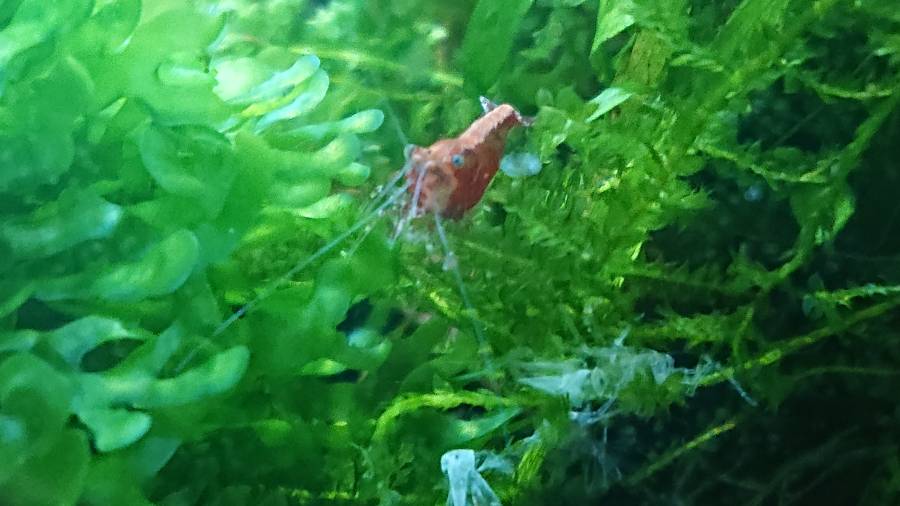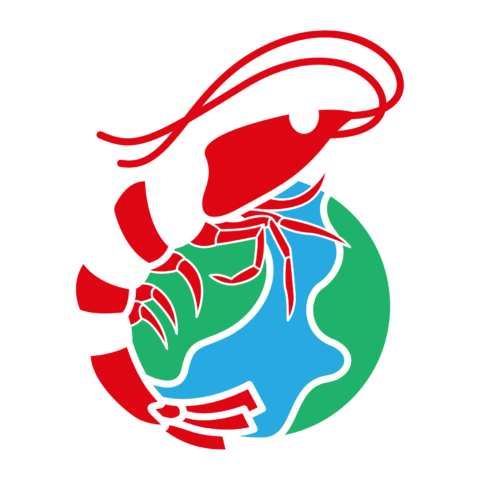Cherry shrimp, scientifically known as Neocaridina davidi, are fascinating and vibrant freshwater invertebrates popular among aquarists due to their hardiness, ease of care, and striking colors. Creating an ideal environment with specific water parameters is crucial for their health and well-being. Let’s dive into the detailed water parameters required for the perfect Cherry shrimp habitat.

Good Water Parameters for Cherry Shrimp:
Temperature: Maintaining a stable temperature is vital for Cherry shrimp. They thrive in temperatures between 65°F to 80°F (18°C to 26°C). Ideally, the sweet spot is around 72°F to 78°F (22°C to 25°C). Fluctuations outside this range can stress or even harm these sensitive creatures.
pH Level: Cherry shrimp prefer slightly alkaline to neutral water conditions. The optimal pH range for them is between 6.5 to 7.5. It’s crucial to avoid extreme fluctuations in pH as it can cause stress, affecting their health and reproduction.
Water Hardness: They thrive in moderately hard water with a GH (General Hardness) of around 6 to 8 dGH and a KH (Carbonate Hardness) of 3 to 10 dKH. These parameters help in molting and maintaining their exoskeletons.
Ammonia, Nitrites, and Nitrates: Cherry shrimp are extremely sensitive to ammonia and nitrites. Ammonia and nitrite levels should ideally be undetectable, and nitrates should be kept under 20 ppm (parts per million). Regular water changes and proper filtration are essential to maintain these levels.
Water Filtration and Circulation: A gentle filtration system is necessary to keep the water clean without creating strong currents that can stress the shrimp. Sponge filters or pre-filters on the intake of the filter can be ideal. Adequate water circulation ensures even distribution of heat and oxygen.
Chlorine and Chloramines: Chlorine and chloramines in tap water can harm Cherry shrimp. Always use a water conditioner specifically designed for removing these chemicals before adding water to the tank. Letting the water sit for 24 hours can also help dissipate chlorine.
Copper and Heavy Metals: Cherry shrimp are highly sensitive to copper and heavy metals. Ensure that no copper-based medications or materials are introduced into their environment as even trace amounts can be lethal.
Clean Water and Maintenance: Regular maintenance is key. Perform partial water changes (around 10-20%) weekly to maintain water quality. Remove any uneaten food or decaying plant matter promptly as they can degrade water quality.
Live Plants and Hiding Places: Live plants not only enhance the aesthetics but also help maintain water quality by absorbing nitrates. Providing hiding spots like driftwood, rocks, or caves allows the shrimp to feel secure and reduces stress.
Acclimation Process: When introducing new Cherry shrimp to the tank, it’s crucial to acclimate them slowly to prevent shock. Drip acclimation over an hour or more helps them adjust to the tank’s water parameters.
Creating and maintaining these specific water parameters will ensure a thriving environment for Cherry shrimp. Monitoring and consistency are key to their health and longevity. Remember, understanding their needs and providing a stable habitat is crucial for their well-being.
Tools you can use
Using meters or test kits is a practical way to monitor and maintain the essential water parameters for Cherry shrimp in an aquarium. Several types of meters and kits are available to measure different parameters.
PH Meter/Test Kit: A pH meter or test kit is essential to measure the acidity or alkalinity of the water. These tools help ensure the pH level stays within the recommended range of 6.5 to 7.5 for Cherry shrimp. Regular testing, especially after water changes, allows for prompt adjustments if the pH deviates from the ideal range. Here a cheap version PH Meter
GH and KH Test Kit: General Hardness (GH) and Carbonate Hardness (KH) test kits are used to measure the hardness of the water. Maintaining GH between 6 to 8 dGH and KH between 3 to 10 dKH is crucial for the shrimp’s health. Testing for these parameters helps in understanding if the water requires remineralization or adjustments to maintain stability.
Ammonia, Nitrite, and Nitrate Test Kit: Regular testing for ammonia, nitrites, and nitrates is vital since Cherry shrimp are highly sensitive to these compounds. Keeping ammonia and nitrites at undetectable levels and nitrates below 20 ppm ensures a healthy environment. Test kits help in determining when water changes are necessary to maintain optimal levels.
TDS (Total Dissolved Solids) Meter: A TDS meter measures the concentration of dissolved particles in the water. While it doesn’t provide specific parameters, it gives an overall indication of water quality. Cherry shrimp prefer moderate TDS levels, typically around 150-250 ppm. Monitoring TDS helps in ensuring the water quality is within an acceptable range. This is one of the best you can find tested by me TDS (Total Dissolved Solids) Meter
Temperature Thermometer: Maintaining a stable temperature is crucial for Cherry shrimp. A reliable thermometer helps monitor temperature fluctuations, ensuring it stays within the recommended range of 65°F to 80°F (18°C to 26°C). this one is the most nice if you look to keep youre design Temperature Thermometer
| Water Parameter | Ideal Range |
|---|---|
| Temperature | 65°F to 80°F (18°C to 26°C) |
| pH Level | 6.5 to 7.5 |
| Water Hardness (GH) | 6 to 8 dGH |
| Carbonate Hardness (KH) | 3 to 10 dKH |
| Ammonia | Undetectable |
| Nitrites | Undetectable |
| Nitrates | < 20 ppm |
| Filtration | Gentle, avoiding strong currents |
| Water Circulation | Even distribution without stress |
| Chlorine and Chloramines | Removed using a water conditioner |
| Copper and Heavy Metals | Avoidance of copper-based products |
| Maintenance | Regular partial water changes (10-20%) |
| Live Plants | Recommended for water quality |
| Hiding Places | Provide for security and stress reduction |
| Acclimation Process | Slow, drip acclimation for new additions |
Regularly using these meters and test kits allows aquarists to promptly identify any deviations from the ideal water parameters, enabling them to take necessary actions like water changes, adjustments in mineral content, or other modifications to maintain a healthy and stable environment for Cherry shrimp.
I hope I helped you with this post to give as much info you need to know all about What are the perfect Cherry shrimp water parameters
Helpfull post
- How To Make Your Crystal Red Shrimp Live in Hard Water
- Can Crystal Red Shrimp Live in Hard Water?
- Can Amano Shrimp Live in Brackish Water?
- Do Water Changes in a Tank Cause Shrimp to Molt?
- Can Any Kind of Shrimp Survive in Freshwater?
Recent Posts
Buy Now Beginners Guide Freshwater Shrimpcare ... Dive into the miniature world of freshwater shrimp care with our comprehensive e-book! 🦐🌿 Are you fascinated by the idea of...
Cherry shrimp are popular freshwater aquarium pets that are easy to care for, colorful, and entertaining to watch. They are native to Taiwan and belong to the atyidae family. Cherry shrimp are small,...

